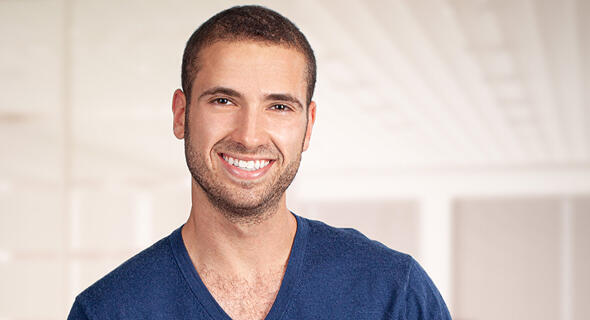
20-Minute Leaders
“Hearing that our product helped a patient keeps us going forward and being excited.”
While working in medical tech has unique challenges, Hila Goldman-Aslan says the impact each employee can have on patients’ health keeps them excited to continue moving forward.
While working in medical tech has unique challenges, Hila Goldman-Aslan says the impact each employee can have on patients’ health keeps them excited to continue moving forward. As co-founder and CEO of DiA Imaging Analysis, she shares that a tweet from a doctor they didn’t know saying their product helped a COVID patient was really rewarding. DiA provides AI analysis of imaging as part of ultrasound devices and IT systems from their channel partners. Goldman-Aslan explains that it was faster to go to market through their partners than by selling directly to hospitals. Still, it took time to go through the regulatory processes and to help doctors trust their solution. She says physicians can be reluctant to adopt new technology, so validation and trial periods are very important. Though DiA is in the scaling phase, she wants to keep their startup DNA and stay innovative and fast changing.
You joined DiA Imaging Analysis 11 years ago as co-founder and CEO. How did you get into this world of imaging analysis and AI?
It wasn't planned. I think that the best things in life are usually not planned. I got my first degree in business, as well as law. My second degree was in commercial law. I practiced law only in the tech industry. Through this process and working with a lot of tech companies, I realized that I didn't want to be a lawyer as a main profession.
I started as a business development manager in a FinTech company, and then managed a few companies in incubator programs here in Israel. Then I met my partner, my co-founder, Michal Yaacobi, when she finished her master's degree around image processing in medical imaging, specifically in cardiac ultrasound. This is how DiA started. Way early to the market, before anybody talked about AI, and only thinking about automating workflows and the analysis of ultrasound images. This is how we built DiA initially. Very naive, but with a great passion and seeing clearly the need for automation in this area.
Tell me a little bit about the challenges that this world presents to a technologist.
Because we are in the clinical space and medical space, the challenges are more in terms of adoption and how can I validate the technology from a user perspective and how can I trust it. Anything that is not medical, you just try it and see if it's good for you.
In the medical space, there are regulation processes like FDA, and even if you have FDA-approved solutions, still the physicians are testing, validating, challenging technology there. The adoption of new technology, in some cases, is a barrier. Physicians are used to doing things in a certain way, and when you're bringing new technology like AI, they hesitate at the beginning. "How can I trust it?"
What were the pushbacks that you were receiving from people in the health industry at the beginning?
I think there are two things that we saw evolving through the last 10 years. The first thing was that physicians said, "I don't need this. I can do everything by eyeballing." That was the first reaction. From the industry, because we are combining our AI solution within ultrasound devices or as part of the healthcare IT systems, what we heard back then was, "I can do it myself if I want to. Why should I use a third party?”
Now, through time, we saw very interesting things. The first thing is the change in the generation of physicians. The new generation of physicians who grew up with cellphones, automation, and trying new things every day were thinking the other way around: How can you help me make things more automated?
The second change was within the actual companies after about 10 years, saying, "If we want to get into the market fast, we must work with third parties’ solutions to accelerate the adoption in the market and be present in the market in this space."
So there is an understanding that they want to leverage third-party technology, but now they have to make some decisions. How do they think about it? What are the things that make them want one company versus another?
The first thing is validation. They want to see publications, your research, your results. For physicians, who eventually are the buyers of those AI solutions, these are the first questions that they are asking. With first adopters, you need to give them a trial period. They want to try it. They want to compare it. This is how they get the trust and make a decision.
When you're thinking about the way that your technology can potentially impact the way that these doctors are working, what are the different considerations that are keeping you up at night now from a domain leadership perspective?
I can tell you what excites me. For example, during COVID, our solution was used as part of GE handheld ultrasound device. We saw a tweet by a physician in UK using our solution within those handheld devices by GE and tweeting that "LVIvo EF," that's the name of our product, "was helping me in the ICU with COVID patient, monitoring patient's heart on a consistent way." That's a case when you are starting to remember why you're doing what you're doing.
Because a startup is like a roller coaster. But having that small tweet of a physician saying, "That helped me. That helped my patient," that's what's keeping us going forward and being excited about what we are doing.
Where is DiA in its current lifecycle?
We have eight FDA and CE mark solutions that are out there in the market. We partner with more than 12 channel partners that are adding our solution to their ultrasound devices or healthcare IT systems. We have more than 4,000 end users available in more than 20 countries. Growing our team. Last year, we closed a big round of investment. Now we are at the scaling position.
We are not a one-product company. We will always continue to invest in R&D, adding more solutions to the market. Mainly, our challenges are how to prioritize what to do next. Heavily investing in the R&D and releasing new solutions to the market. But at the same time, pushing our FDA approved solutions into the market.
What are the different tactics that you can use as the CEO to get this to as many hospitals as possible?
We chose a unique way of entering the market, and that was through channel partners and not going directly to hospitals. I think going forward we've proven that that business model is working. That's the fastest way to get into the market. We're going to continue investing in those partnerships and expanding our partnership portfolio. And at the same time, a lot of marketing activities—being present, hearing the voice of the users, which are the physicians—and making sure that we are aligned with the trends and the pinpoints.
Do people on the team at DiA have a startup mentality? More of a robust tech company?
I think it's still more of a very startup culture and DNA. I hope it will be that way as much as possible. Definitely when you're scaling, you have to bring more processes in order to make things happen faster and in the right way. But on the other hand, keeping it still robust, innovative, open discussions, and fast changing.
So we've talked about a lot of aspects of DiA, and the most important, which I love closing the loop with, is the mission. Where are you in this whole big puzzle of DiA?
Every person in DiA knows that his role impacts patients and physicians. If you look at every role, from marketing to development, each one is eventually working on a product and delivery of a product that will impact lives.
When R&D people are working on their everyday tasks, they're looking at the ultrasound images that are from real patients. When you're starting to work on the white paper or the case study to present in a conference, you are actually talking about case studies of patients and things that actually happened. I think the impact that each and every person at the company has on lives and on the next generation of technology in the imaging space is unique. That's what also keeps people here and enjoying their work.
Michael Matias, Forbes 30 Under 30, is the author of Age is Only an Int: Lessons I Learned as a Young Entrepreneur. He studies Artificial Intelligence at Stanford University, is a Venture Partner at J-Ventures and was an engineer at Hippo Insurance. Matias previously served as an officer in the 8200 unit. 20MinuteLeaders is a tech entrepreneurship interview series featuring one-on-one interviews with fascinating founders, innovators and thought leaders sharing their journeys and experiences.
Contributing editors: Michael Matias, Megan Ryan














